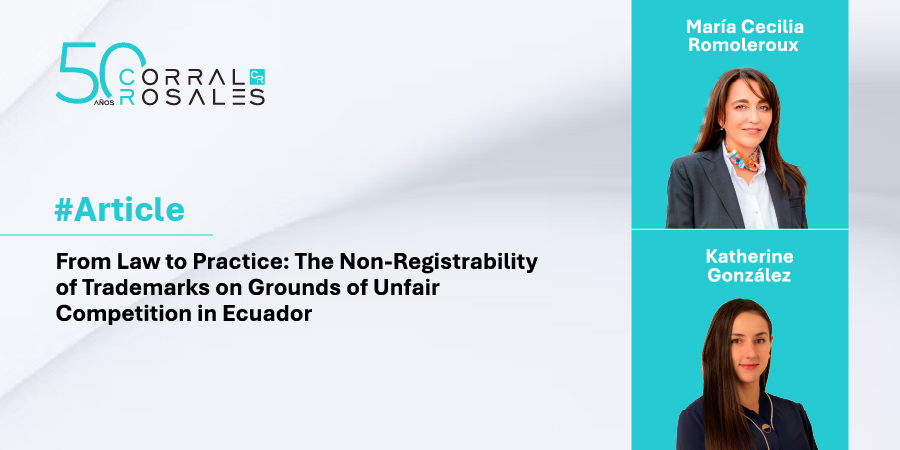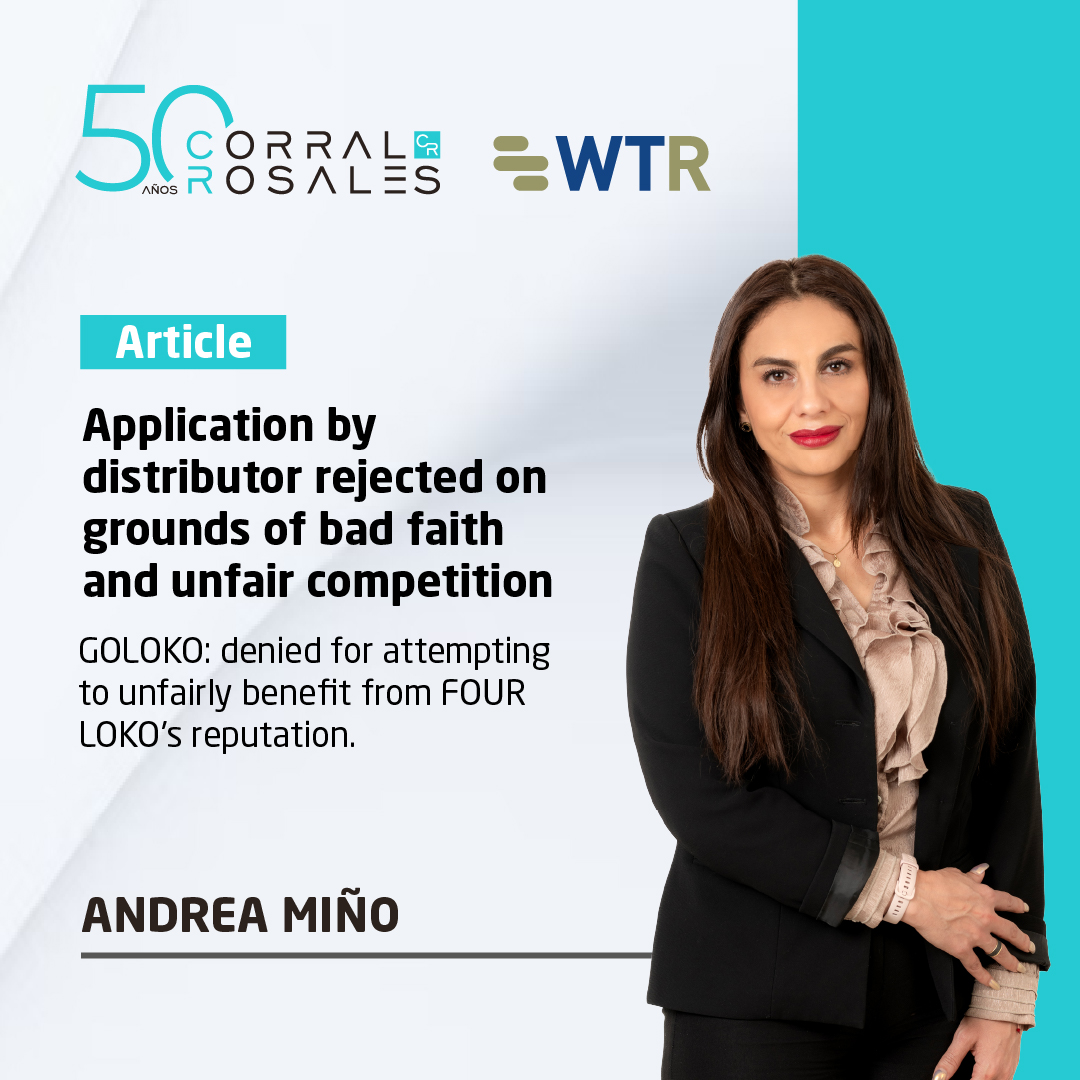Within the framework of the common industrial property regime of the Andean Community, of which Ecuador is a member state, Decision 486 establishes in Article 137 an important rule for national IP offices:
“When the competent national office has reasonable grounds to infer that a registration has been applied for in order to perpetrate, facilitate, or consolidate an act of unfair competition, it may refuse such registration.”
Among the scenarios that may constitute unfair competition is the following:
“Any act capable of creating confusion, by any means, with respect to the establishment, products, or industrial or commercial activity of a competitor.”
Although this provision has been in force since the year 2000, its application by the Ecuadorian IP Office (SENADI) has historically been limited. The authority has traditionally prioritized other grounds for refusal, such as lack of distinctiveness—whether inherent or acquired—or bad faith, especially where there was a prior relationship between the applicant and the rightful trademark owner.
For years, the grounds of unfair competition were dismissed and considered by some as a matter exclusively governed by antitrust or competition law, outside the scope of trademark registration. However, in recent years, there has been a gradual shift in the IP Office´s administrative interpretation of this provision.
Jurisprudential Evolution: The “CARMEX” Case
A significant illustration of this change is found in a recent decision rejecting the registration of the mark CARMEX for goods in Class 03, including bleaching preparations, soaps, cosmetics, and essential oils, among others.
The application, filed by an Ecuadorian citizen in 2020, was opposed by the owner of the CARMEX trademark in multiple foreign jurisdictions, including the US, UK, Brazil, Mexico, and China. The opposing party alleged that the application constituted an act of unfair competition and a breach of the principle of good faith.
In a decision issued in May 2025, the Ecuadorian IP Office ruled as follows:
- The argument concerning foreign registrations was dismissed on the basis of the principle of territoriality, enshrined in trademark law.
- The opposition was upheld, recognizing that the use of the applied-for mark constituted an act of unfair competition through imitation, considering the prior use of the CARMEX mark in other markets. This could potentially mislead consumers and unduly benefit from the opponent’s reputation.
The IP Office concluded that granting the registration would run contrary to the principles governing fair market competition. It emphasized that the intellectual property system must protect not only the trademark owner´s interests, but also those of consumers and market balance.
Legal Implications
This decision marks a significant shift in Ecuadorian administrative practice, as it effectively incorporates the analysis of unfair competition as an autonomous ground for refusal. It aligns with the principles of integrity in the industrial property system and commercial loyalty.
The resolution also reflects a more flexible interpretative approach, more consistent with the globalized nature of commerce, acknowledging that the principle of territoriality, though still valid, should not be rigidly applied when it results in the improper appropriation of well-known or widely used marks.
Final Reflection
The recognition of unfair competition as a legitimate ground for refusal of trademark registration is a meaningful step toward a more comprehensive application of trademark law. In a landscape where commercial practices evolve constantly, IP Offices must adopt dynamic criteria that provide effective protection against practices that distort the market and undermine legitimate rights.
Ecuador’s experience in this case sets a valuable precedent not only at the national level, but also as a regional reference for Andean countries and other jurisdictions facing similar challenges at the intersection of trademark law and competition law.
Such decisions -and any that help guarantee and uphold the rights of trademark owners- are a welcome development.
María Cecilia Romoleroux
Socia en CorralRosales
maria@corralrosales.com
Katherine González
Asociada senior en CorralRosales
katherine@corralrosales.com


















